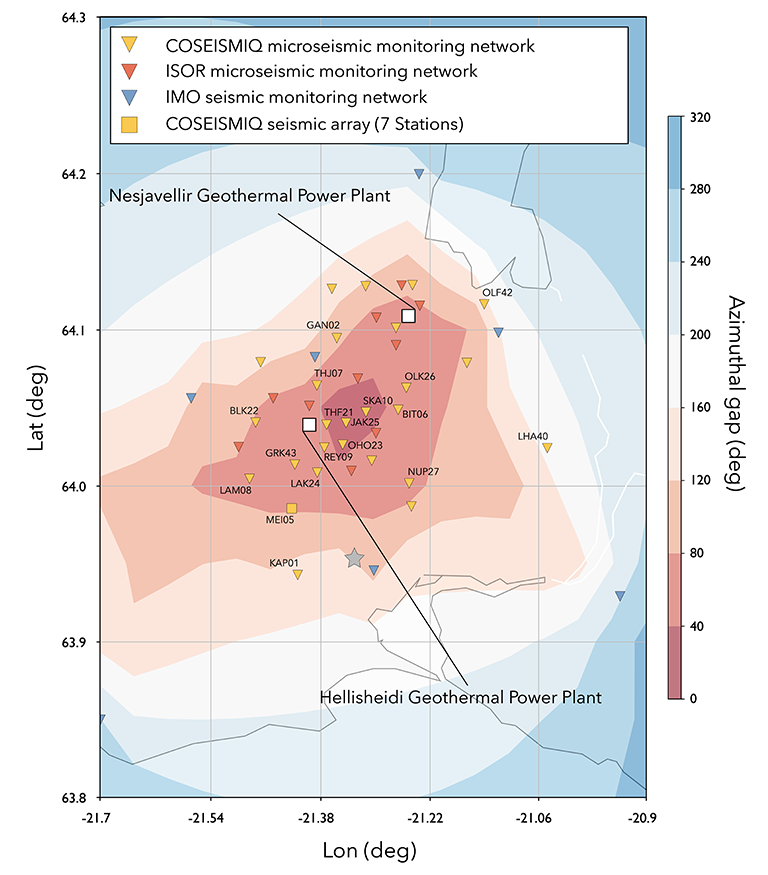WP2 - Microsismic Monitoring and Imaging
Lead: DIAS
Real-time microseismic monitoring:
Fluid injection into the subsurface can generate earthquakes called micorseismicity. In order to mitigate the risk associated with these events an Advanced Traffic Light Systems (ATLS), a decision support tool, is being developed. Input information for ATLS requires a knowledge of where induced microseismic events evolve in space and time, in the subsurface.
In this deliverable we describe an advanced microseismic monitoring tool developed at the Swiss Seismological Service (SED) that allows the determination of high precision microseismicity locations in a real-time manner.
Microseismic imaging:
A key desire during geothermal injection operations is to image fluid injection from the source region into the surrounding rock. One approach is to attempt to track pore pressure variations using induced microseismic events. This requires a good microseismicity database and the ability to track & quantify microseismic source evolution, and to determine near source geomechanical properties.
Since November 2018, within the framework of the COSEISMIQ project, the number of seismic stations deployed in the Hengill geothermal field has been increased from 16 to 40. Such a dense seismic network allows us to better monitor and analyze the micro-seismicity in this area, as one of the selected demonstration sites in this project. Over the past year this high resolution database has been growing, and initial results from it are used in this deliverable.
Before we can consider source imaging, it is important to describe and characterize the available microseismicity database. To characterize the micro-seismicity in the Hengill geothermal site, we combined the seismic data acquired by the dense seismic network, consisting of short-period and broadband seismometers, with advanced and robust methods for seismicity location, spatial clustering and moment tensor inversion.
